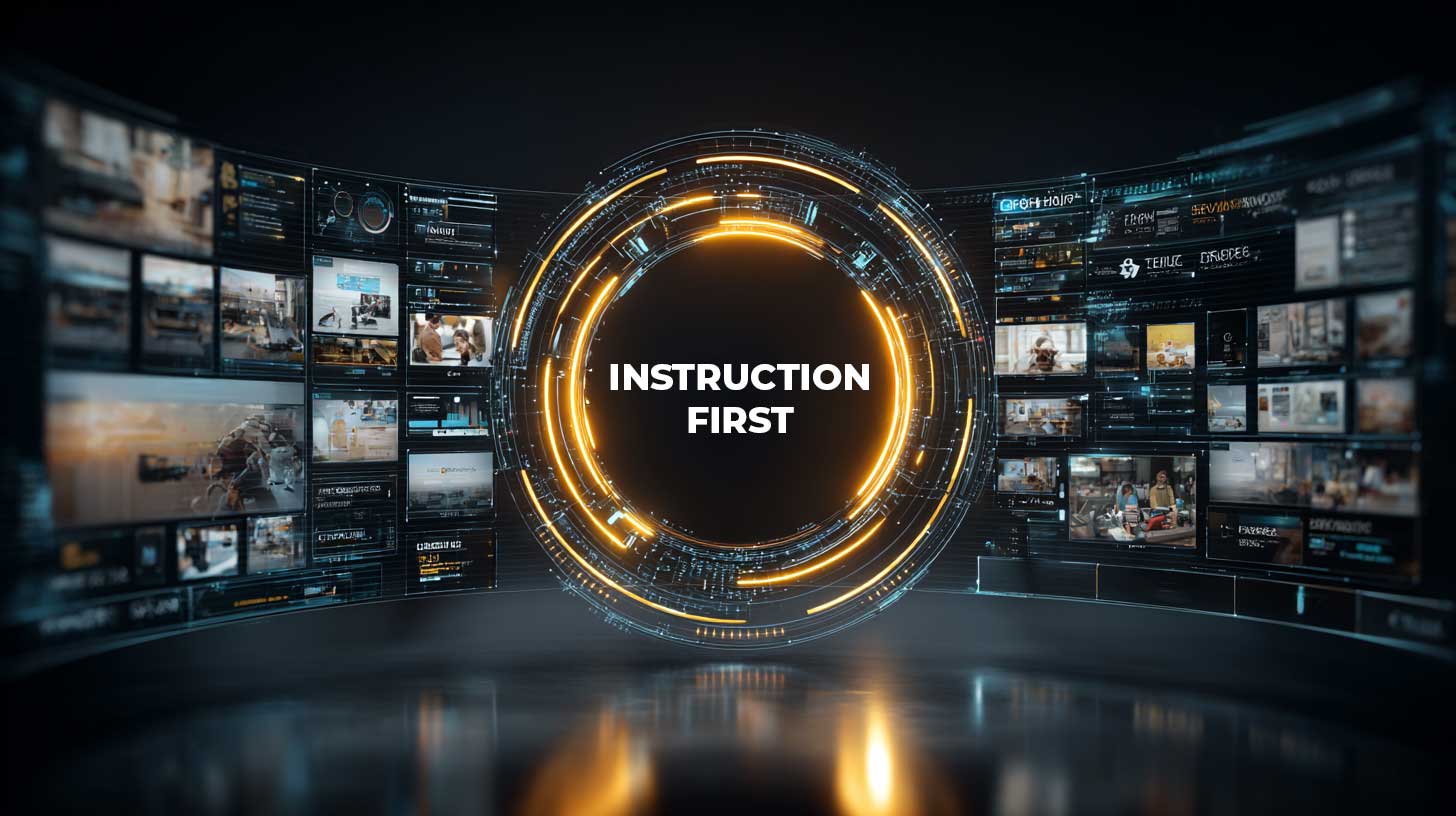4 min read
Hybrid Learning Design Under Pressure: Safeguarding Engagement and ROI
 Jennifer Lindsay-Finan
:
Nov 24, 2025 8:30:00 AM
Jennifer Lindsay-Finan
:
Nov 24, 2025 8:30:00 AM

Most L&D leaders know the frustration: you design a program, and then reality intrudes, budgets shrink, timelines compress, and the tech you want isn’t available. Oftentimes, instructional design starts by accommodating these limits which almost guarantees lower ROI.
There’s a better way. Start with the best-case blended learning design on paper, an unconstrained version that maximizes outcomes and learner engagement. In this context, ROI from learning technology means more than financial return. It reflects how well your learning technology delivers measurable business impact, sustained performance improvement, and stronger learner engagement. The question for leaders is simple: how do you maximize ROI from learning technology, even under constraints? Then layer on the constraints. This shift in mindset gives you more options, stronger engagement, and defensible ROI from learning technology.
KEY TAKEAWAYS
- Always start with the best blend—don’t design from constraints
- Blended learning design is flexible—it adapts without losing integrity
- Hybrid learning magnifies constraints—but engagement can still be preserved
- Eight common constraints that impact ROI—budget, time, tech, access, policy, scale, capacity, resistance
- Navigator structures adaptation—primary vs. alternate choices protect ROI and learner engagement
Why You Should Always Start with the Best Blend
As we explained in "Instruction First, Tech Second: Smarter L&D Delivery Decisions," ROI is either secured or lost in how delivery choices are made. The safest path is to design the best-case blended learning plan. What would maximize engagement and outcomes if there were no limits?
For example, a leadership development program might start with a best-case blend of pre-work reflection, live virtual role-play sessions, and follow-up peer coaching. Beginning with this ideal vision makes it easier to identify what can be preserved if time or budget later create limits.
Starting this way also prevents teams from defaulting to familiar formats, overlooking the role of the virtual classroom in blended design, or falling into technology-first shortcuts, which we outlined in "EdTech ROI: The Missing Link is Instructional Design."
Blended Learning Design as the Safeguard for ROI from Learning Technology
Blended learning design consistently outperforms single-format approaches. When you begin with a rich blend—synchronous, asynchronous, and experiential—you create a strong baseline for adaptation. Later, constraints can be layered on without erasing the fundamentals.
Benefits of blended learning include:
- Flexibility to reach diverse audiences
- Reinforcement through multiple formats (e.g., microlearning + live practice)
- Scalability for hybrid and global programs
- Stronger learner engagement across emotional, intellectual, and environmental dimensions
For more on why engagement matters across formats, read "Driving Learning ROI with the InQuire Engagement Framework™."
Hybrid and Blended Learning Under Pressure
Hybrid learning offers flexibility for today’s workforce, but it also magnifies the impact of constraints. Programs must work across time zones, languages, and varying levels of tech access. Learners may struggle with bandwidth limitations or balancing schedules across global teams, which can erode engagement if not planned for.
This is where blended learning design in hybrid environments becomes essential, sequencing formats so learners still receive the right type of practice, collaboration, and reinforcement.
For strategies, check out our post "Blended Learning Design in the Hybrid Environment," which explores how hybrid and blended approaches reinforce each other for measurable results.
8 Common Constraints That Undermine ROI from Learning Technology
Every L&D team encounters limits and each of these constraints threatens learner engagement and ROI from learning technology. These are the eight most common barriers to delivering the “ideal” design:
- Budget limits — reduced funding cuts delivery options and engagement layers
- Time compression — less time means fewer opportunities for practice and feedback
- Technology availability — not every platform or tool is licensed or reliable
- Learner access — bandwidth, devices, or schedules limit participation
- Policy and compliance — mandated formats (like “annual webinar only”) override design
- Global scale — time zones, language, and culture complicate delivery
- Facilitator capacity — limited skilled facilitators or producers weaken quality
- Change resistance — stakeholders often push for “what we’ve always done.” Each decision point must be framed to show how adapting safeguards ROI from learning technology.
Learn more with Dr. Jane Bozarth's book, From Analysis to Evaluation: Tools, Tips, and Techniques for Trainers, for practical strategies to connect constraints, design, and evaluation for measurable ROI.
Turning Constraints Into Smarter Design Decisions
The key is to start with the best blend and then adapt intentionally. Here’s how each constraint can be managed:
- Budget → Prioritize must-have objectives and move reinforcement into low-cost formats like job aids or microlearning
- Time → Compress live delivery but extend learning with asynchronous coaching, pre-work, or follow-up modules
- Technology → Use tools like our Navigator™ to plan fallback options so a single platform doesn’t dictate success
- Learner access → Offer recordings, mobile-first design, or staggered sessions to improve reach
- Policy → Pair required formats with supplemental elements such as quizzes, quick guides, or micro-videos
- Global scale → Deliver consistency through recorded modules, while enabling regional live sessions for dialogue
- Facilitator capacity → Rely on skilled virtual producers to extend facilitator reach and keep sessions interactive
- Change resistance → Present best vs. constrained scenarios side by side, showing stakeholders what’s lost and why it matters
Virtual Classroom as the Fallback—And How to Make It Work
The virtual classroom is often the default when other formats aren’t feasible. But a one-way webinar drains engagement and weakens ROI. To protect outcomes, use certified virtual facilitators that:
- Use breakout rooms for collaboration and practice
- Add polls and chat prompts to sustain interactivity
- Incorporate role-play or case studies for applied skills
- Provide reinforcement tools such as recordings, job aids, and coaching guides
These strategies transform the virtual classroom from a fallback into a space where hybrid learners stay engaged and outcomes remain measurable, strengthening its place within blended learning design.
We discussed additional strategies and more in our post "Engagement in Virtual, Hybrid, and Blended Learning."
The Navigator Advantage: Best Case Meets Real Case
Launching in 2026, the InSync Design Navigator™ structures this process so L&D teams don’t have to guess. It provides a clear framework for aligning ideal design intent with real-world delivery constraints. Here’s how it works:
- Define the best-case blend for each objective
- Identify primary vs. alternate delivery choices before constraints hit
- Document trade-offs clearly for stakeholders
- Preserve learner engagement across emotional, intellectual, and environmental dimensions
Sign up to be among the first to see the InSync Design Navigator™ before it launches in 2026!
By planning for both the ideal and the realistic, leaders create designs that withstand constraints while keeping ROI defensible at the executive table. This structured process ensures that hybrid learning programs remain aligned with objectives and protected from common pitfalls. If you're interested in learning about more examples, read "Scaling Learning: Simplifying Global L&D with InSync."
From Possibility to Proof: Maximizing ROI from Learning Technology
Proving ROI from learning technology isn’t about having unlimited resources. It’s about starting with the best design and then adapting with discipline when constraints arise. The smartest L&D leaders design for flexibility, safeguard learner engagement, and preserve outcomes no matter the challenge.
SEE THE InSync Design Navigator™ IN ACTION
- Join our upcoming session Design Smarter: Solving L&D’s Tech ROI Problem with the Design Navigator Prototype
 Read More
Read More

